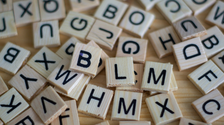Hiragana - Who said you have to remember them in order like a , i , u...?
There is a much quicker and effective way to learn them out of the traditional order!
We are going to learn the characters in a logical sequence, learning them in similar batches, and reinforcing our learning through common words.
One of the first steps on your mission to learn Japanese is to master hiragana.
There are three parts to the Japanese writing system: hiragana, katakana, and kanji.
Hiragana is a syllabary, not an alphabet.
What’s the difference?
Well, an alphabet consists of letters which denote single consonants and vowels. A syllabary consists of letters that contain the sounds of syllables.
For example, in the English alphabet we have letters like ‘a’ and ‘k’. One denotes a vowel, the other denotes a consonant. But, in hiragana we have characters like か which stands for the sound ka, and characters like こ which stands for the sound ko, and so on.
There are 46 characters in the hiragana syllabary. It is important that you know all of them and know them well. Failing to master hiragana within your first month of learning Japanese will result in you being kidnapped by the Yakuza.
Hiragana may look incredibly difficult and overwhelming if you are used to learning European languages. Many English speakers are uncomfortable stepping outside of the Roman alphabet.
But have no fear!
Japan has one of the highest literacy rates in the world with 99% of the population able to read and write. So, if we can master these difficult-looking squiggles, so can you!
If you’re still nervous, rest assured that I have developed a system that will take the pain out of learning hiragana. This system does not rely on rote repetition like many other systems advocate. Instead it injects some fun into the process, using visualization and imagination techniques.
So, grab your chopsticks, dip them in some ink, and let’s get to practicing.
First, we’re going to do things a little differently from the more traditional methods.
We are not going to learn hiragana in order.
If we learn the characters out of order, in a more logical sequence, we can speed up our acquisition of the material and improve our retention.
We’re going to start with the character の which signifies the sound no. This one should be easy to remember. Just think of a stop sign. It kind of looks like one with the line going diagonally through an almost-circle. And stop means "no"!
の is used as a possessive particle.
It's like "of" or "'s" in English, e.g- ねこ の め neko NO me - meaning "cat's eyes" or "eyes of a cat".
The next character we have is め which makes the sound me. め has the meaning of "eye(s)". Yes, Japanese has plenty of words that consist of just one letter!
I put め here, because it is the most similar character to の.
After め we will progress to ぬ.
For the following, please consult the article image:
The order in which you write the strokes for each character is in pink.
The orange box contains commonly used words that I have given you to pick up as you learn the hiragana characters. As you progress, I will only use the hiragana you have already learned in order to reinforce it and cement it into your head.
For example, after you have learned the characters あ for a and め for me, you are already able to write a word: あめ or ame, which means both "rain" and "candy".
The diagram will show you the easiest way to learn hiragana. Make sure you put in the effort and you will be rewarded by quick acquisition of hiragana. Stick with it and keep practicing. You can even print the diagram out and stick it up where you see it often, like on your bedroom or bathroom wall.
Let me know what you think!
I hope this helps and you find learning hiragana easy and enjoyable.
Ganbatte ne!
Japanese Ammo is a new exciting resource for passionate learners. Become a kid again, and have fun using the power of your imagination to unlock your Japanese learning potential. The site is still a baby, so please show it some love and it will grow. The baby belongs to Misa, an enthusiastic multilingual ninja, eager translator, manga lover, and happy world traveller. Tell her what you would like to learn and she will help you!







